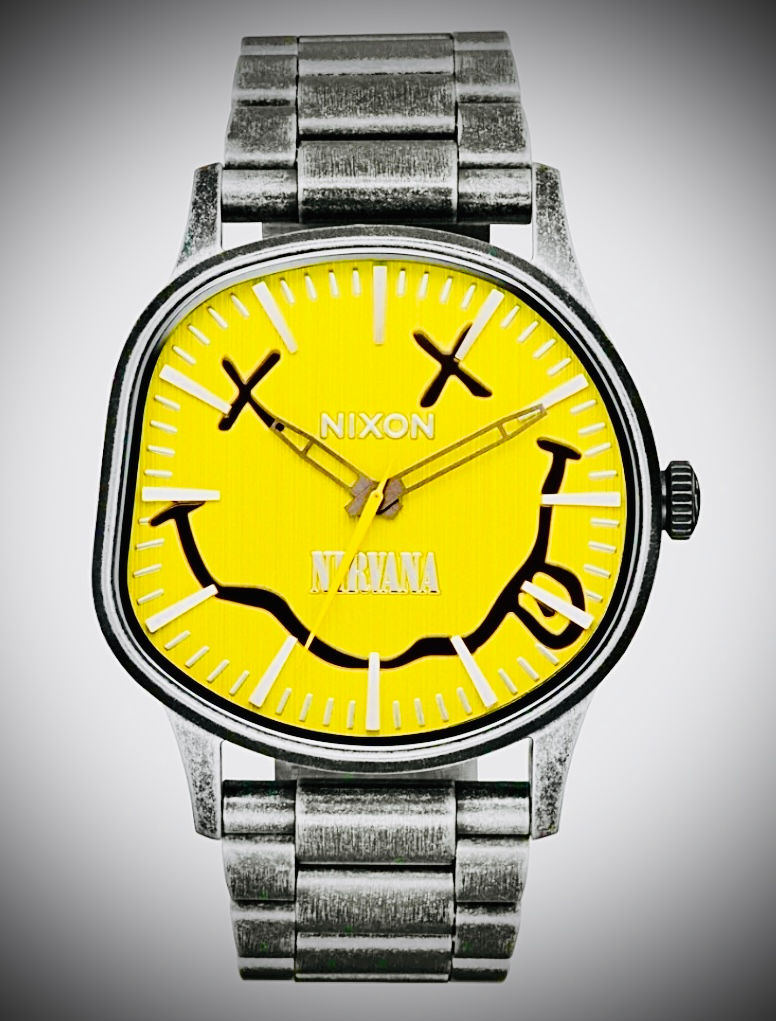The Stinger 44: Nixon’s Quiet Rebellion in Plain Sight.
- T
- Sep 1
- 4 min read
Nixon has never been the sort of brand to sit politely at the horological dinner table. Born in Encinitas, California in 1997, it came out of surf, skate, and snow culture with sand still on its feet and salt in its hair, asking the obvious but unsaid: why should watches be stiff, starchy, and embalmed in heritage? While the Swiss houses polished their nostalgia, Nixon built its reputation on irreverence, curiosity, and function-first design. Every piece carried that California DNA – versatile enough to slip from a lineup at Huntington Beach to a boardroom in San Diego, durable enough to take the hits, and stylish enough not to care if it got a scratch or two. Cult status followed, not because of hype, but because Nixon managed to bottle the rare mix of attitude and substance: a sense of play underpinned by craftsmanship and an eye for innovation in an industry that prefers its change at glacial pace.
And then there’s the dive watch. Once a tool of survival, it has drifted into the realm of trophy objects – wrists flexing beneath cufflinks, bezels rotated more for signalling “serious collector” than for timing anything more strenuous than a flat white. Nixon, predictably, won’t indulge the charade. The Stinger 44 doesn’t masquerade as an underwater relic or a nostalgic nod to Jacques Cousteau. Instead, it’s dive-inspired kit designed with a wink – aware that you’re more likely charting a course through a crowded rooftop bar than the Mariana Trench. What makes it compelling isn’t the posturing, but the balance: reliable performance, rugged build, and a design language that thrives on duality – technical yet playful, functional yet cheeky. In short, it’s a watch that knows exactly what game it’s playing, and it’s doing it better than most.

At its core, the Stinger 44 ticks all the boxes a proper diver should - a 44mm stainless steel case, unidirectional bezel, and 100-meter water resistance that shrugs off both saltwater and the occasional clumsy spill at a dinner party. But to reduce it to specs would be to miss the point. What makes the Stinger hum is personality. Its pared-back profile sidesteps the tired “bigger is better” dogma, while the crown - defiantly shifted to 9 o’clock - reads as both ergonomic cleverness and a wink at the rules. Nixon knows the horological commandments, but they’d rather rewrite them in the margins.
The solar movement is another quiet provocation. Where traditional watchmaking fetishises ritual - winding, battery changes, the whiff of oil on a service bench - Nixon opts for something more liberating. The Stinger charges off whatever light you throw at it, storing four months of energy like it’s stockpiling sunshine for the apocalypse. It’s sustainability stripped of sermonising: not a manifesto, but a sly, functional gesture toward the future. In a market where “green” often means gimmickry, Nixon’s approach feels less sanctimonious, more Californian common sense.
And that’s the thread that ties the Stinger back to Nixon’s broader story. This is a brand that’s always balanced cultural irreverence with meticulous craft. The Nirvana Wobble collab was proof enough - a watch that turned time into a dizzying spin of discs, equal parts joke and engineering flex. Beneath the playfulness was the kind of precision only a serious watchmaker could pull off. The Stinger inherits that DNA. It isn’t about clinging to heritage tropes or trying to out-submarine a Submariner. It’s about crafting a watch that can weather both the deep and the daily - with resilience, wit, and just enough rebellion to keep the establishment nervous.

Wearing the Stinger doesn’t just feel different - it reminds you that difference is the point. Where the Swiss lean on centuries of romance and the Japanese cloak themselves in monastic precision, Nixon refuses to play in either camp. Instead, it gives you something far rarer in watchmaking: a timepiece that admits life is equal parts useful and ridiculous, serious and playful. The Stinger doesn’t separate these poles - it lets them collide, with the wearer caught happily in the middle.
What makes the Stinger 44 brilliant isn’t its bid for icon status - it’s that it couldn’t care less about being one. Its confidence is quieter, sharper, more lived-in. The watch isn’t clamouring for approval with bulk or bluster; it’s built for those who want a companion that can ride waves at dawn, then hold its own under low-lit chandeliers by night. It knows tradition, but it isn’t hostage to it.
In that sense, the Stinger is less a diver and more a sly wink at the whole notion of watchmaking orthodoxy. It acknowledges the theatre of horology - heritage, ritual, reverence - then chooses to surf right past it. That refusal to take itself too seriously is where Nixon’s true genius hides: a reminder that time, after all, is meant to be lived, not worshipped.
—-
Words by AW.
Photo courtesy of Nixon.





